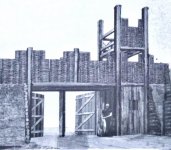Asher Kelman
OPF Owner/Editor-in-Chief
So what sort of City housed our prestigious School of Medicine? What culture was there? What kinds of advances and achievements had this City contributed to our civilization and mastery of this fragile planet we call home. I will point out just a few, and each is remarkable!
Birmingham is an industrial City north of London famous for its Orchestra with rising levels in a horseshoe shape!
Astonishingly, breaking with centuries of tradition, the sound of each instrument now freely radiates, no longer obstructed and dampened by clothing of musicians in front.
This raised positioning of instruments optimizes the acoustics of the hall. The features of the sound are more fully expressed. It’s likely increases the projection of the sound by a significant margin!
Now to another call to fame from Birmingham! This time in medicine:
An old woman, Mother Hutton”, wise in healing with herbs, brought potion-brewed from the foxglove plant to treat heart failure to Dr William Witheging.
That passing of an ancient remedy, (once polished by purifying the drug and learning to measure the correct dosage), revolutionized medicine to become the foundation for treatment of congestive cardiac failure with digitalis!
[When I was in Nigeria, I had the fascinating experience where a witchdoctor treated a patient with “jumping neck veins” with the juice of a flowering vine that grew around palm trees! I think that was also a digitalis drug!]
Allegedly, Withering first learned of the use of digitalis in treating "dropsy" (œdema) from "Mother Hutton", an old woman who practised as a folk herbalist in Shropshire, who used the plant as part of a polyherbal formulation containing over 20 different ingredients to successfully treat this condition.[13][14][15] Withering deduced that digitalis was the active ingredient in the formulation, and over the ensuing nine years he carefully tried out different preparations of various parts of the plant (collected in different seasons) documenting 156 cases where he had employed digitalis, and describing the effects and the best - and safest - way of using it. At least one of these cases was a patient for whom Erasmus Darwin had asked Withering for his second opinion. In January 1785 Darwin submitted a paper entitled "An Account of the Successful Use of Foxglove in Some Dropsies and in Pulmonary Consumption" to the College of Physicians in London;[16]
In the University, chemists put together the science of replacement fluids for person involved with trauma, burns, crush injuries war and allowed surgery to proceed despite loss of blood.(Wikipedia)
Two other Birmingham Scientists, convinced that Niels Bohr and Albert Einstein were in gross error, saying production of an atomic bomb was inactivate.
They were pessimistic because they were certain a chain reaction required tons of pure radioactive Uranium isotope!
However, the two physicists in Edgbaston estimated only 5kg of the pure isotope was needed. That in a shaped hollow form could be safe until an explosives collapsed the shell inwards to create a critical mass!
Churchill backed their plan and these scientists facilitated the Manhattan Project and the rest is history!
Last edited:


